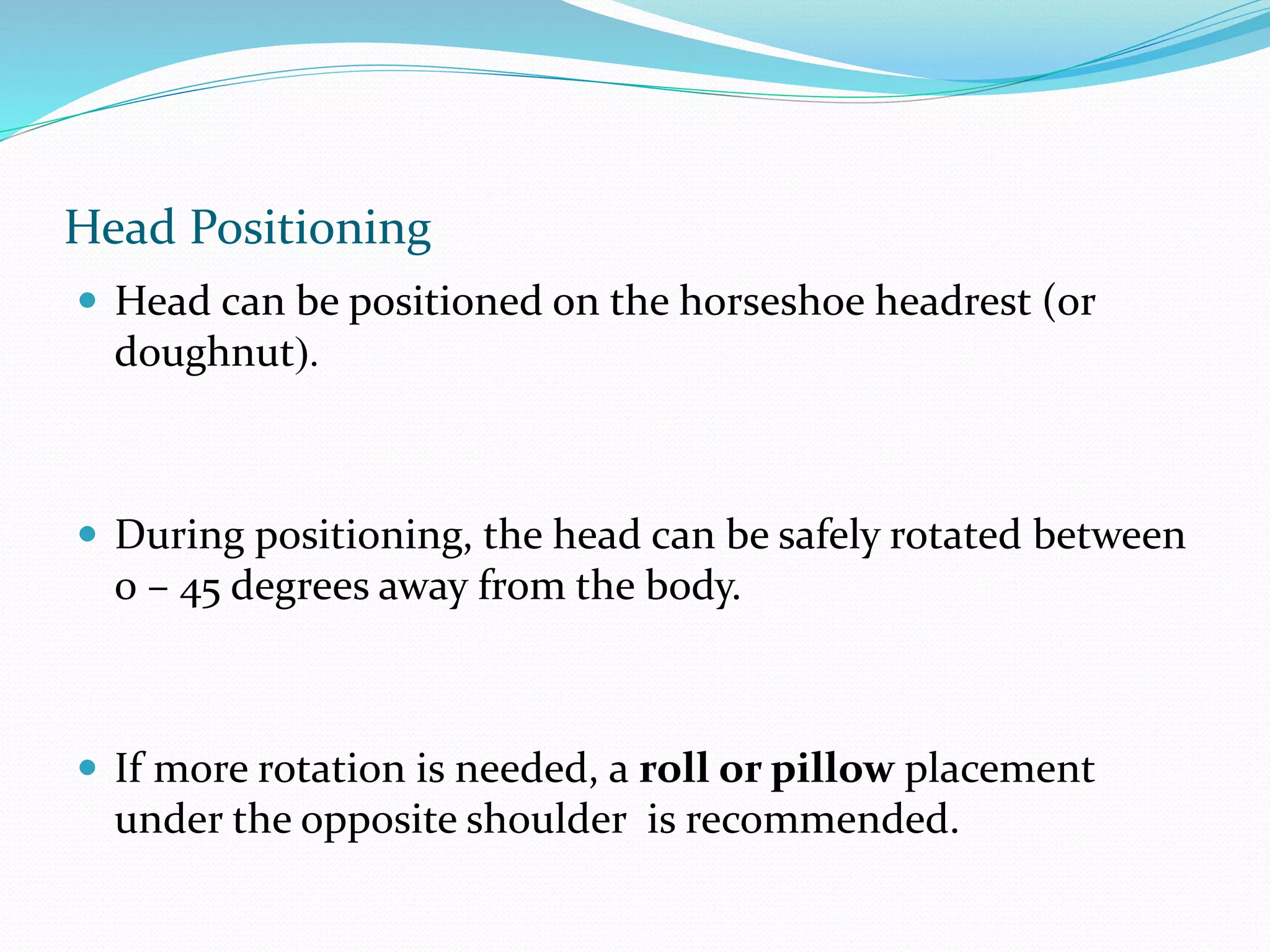The document discusses the critical aspects of patient positioning for intracranial neurosurgery aimed at minimizing complications and ensuring optimal surgical conditions. Key points include techniques for head fixation, arm positioning, postoperative care, and various surgical approaches such as supine, prone, and lateral positions, along with their associated risks and precautions. It also highlights the physiological changes during different positioning and the need for careful monitoring to prevent complications like nerve injuries and air embolism.





































































